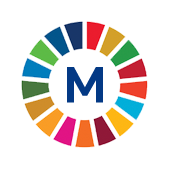 10.а.1 Proportion of tariff lines applied to imports from least developed countries and developing countries with zero-tariffMetadataPeriod: AnnualYear: 2025 |
 10.а.1 Proportion of tariff lines applied to imports from least developed countries and developing countries with zero-tariffMetadataPeriod: AnnualYear: 2025 |
| METADATA |
| Indicator information |
| Definition and methodology |
| Data source type and data collection method |
| Notes |
| ID of global indicator |
| Metadata update |
| Global metadata |
| Indicator information | Top |
| Indicator | |
10.а.1 Proportion of tariff lines applied to imports from least developed countries and developing countries with zero-tariff | |
| Global indicator name | |
10.a.1 Proportion of tariff lines applied to imports from least developed countries and developing countries with zero-tariff | |
| Target | |
10.a Implement the principle of special and differential treatment for developing countries, in particular least developed countries, in accordance with World Trade Organization agreements | |
| Goal | |
Goal 10. Reduce inequality within and among countries | |
| Definition and methodology | Top |
| Definition | |
Proportion of total number of tariff lines (in per cent) applied to products imported from least developed countries and developing countries corresponding to a 0% tariff rate in Harmonized Commodity Description and Coding Systems (HS) chapter 01-97.
Tariffs are customs duties on merchandise imports, levied either on an ad valorem basis (percentage of value) or on a specific basis (e.g. $7 per 100 kg). Tariffs can be used to create a price advantage for similar locally-produced goods and for raising government revenues. Trade remedy measures and taxes are not considered to be tariffs. | |
| Methodological explanations | |
The calculation of this indicator will allow observing on how many products Developing countries and LDCs will have free access to Developed countries markets. When compared to the tariff rates applied to other countries, this indicator will allow assessing to which extent special and differential treatment has been accorded in terms of import tariffs. The evolution of this indicator will indicate progress on the phasing out of tariff rates on goods coming from Developing and LDCs.
The main information used to calculate indicators 10.a.1 is import tariff data. Information on import tariffs might be retrieved by contacting directly National statistical offices, permanent country missions to the UN, regional organizations or focal points within the customs, ministries in charge of customs revenues (Ministry of economy/finance and related revenue authorities) or, alternatively, the Ministry of trade. Tariff data for the calculation of this indicator are retrieved from ITC (MAcMap) - https://www.macmap.org/ - WTO (IDB) - https://tao.wto.org - and UNCTAD (TRAINS) databases. Import tariff data included in the ITC (MAcMap) database are collected by contacting directly focal points in line national agencies or regional organizations (in the case of custom unions or regional economic communities). When available, data are downloaded from national or regional official websites. In some cases, data are purchased from private companies. Import tariff data included in the WTO (IDB) database are sourced from official notifications of WTO members. Import tariff included in the UNCTAD (TRAINS) database are collected from official sources, including official country or regional organizations websites. | |
| Method of calculation | |
The indicator is calculated as the average share of national tariff lines that are free of duty. The calculation of this indicator is a straightforward ratio of the total number of products imported that can benefit duty free imports from developing countries or least developed countries and the total number of products imported from developing countries or least developed countries.
The number of products is represented by the number of tariff lines. The indicator is calculated excluding arms and oil.
Missing values are calculated using the most recent year available.
Indicatively the indicators calculations can be ready by March every year. However, the date of release will depend on the period envisaged for the launching of the SDG monitoring report.
For details on the method of calculation please see at https://unstats.un.org/wiki/display/SDGeHandbook/Indicator+10.a.1 | |
| Unit of measure | |
% | |
| Available disaggregation | |
Product sector | |
| Territorial level | |
Republic of Serbia | |
| Data source type and data collection method | Top |
| Data source | |
ITC/UNCTAD/WTO database | |
| Periodicity of data collection | |
Annual | |
| Notes | Top |
Tariff-based measures of differential treatment are not accurate, but better measures are unavailable. These are only part of the trade limitation factors, especially when looking at exports of developing or least developed countries under non-reciprocal preferential treatment that set criteria for eligibility.
Preferential treatment may not be used by exporters from developing and LDC for reasons such as the inability to meet eligibility criteria (i.e. complying with rules of origin). As there is no accurate statistical information on the extent of the actual utilization of these benefits, it is assumed that they are fully utilized.
Duty free treatment is an indicator of market access, but is not always synonymous with preferential treatment for beneficiary countries. This is because the Most Favored Nations (MFN) tariffs are already at near zero levels, especially for fuels and minerals, and IT products.
Data for this indicator are taken from the UN SDG global database https://unstats.un.org/sdgs/unsdg | |
| ID of global indicator | Top |
C100a01 | |
| Metadata update | Top |
| 30/5/2025 | |
| Global metadata | Top |
https://unstats.un.org/sdgs/metadata/files/Metadata-10-0A-01.pdf | |